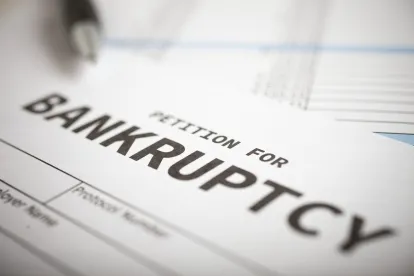The filing of a bankruptcy case puts in place an automatic injunction, or stay, that halts most actions by creditors against a debtor. But can a creditor violate the automatic stay by not acting? The Tenth Circuit recently addressed the issue in WD Equipment, LLC v. Cowen (In re Cowen), adding to the split of authority on the issue.
In WD Equipment, the debtor filed for bankruptcy just after creditors repossessed two of his vehicles. After the creditors refused to return the vehicles, the debtor sought to have the creditors held in contempt for willful violations of the automatic stay. The bankruptcy court agreed and ordered the creditors to immediately turn over the vehicles. When the creditors failed to comply, the debtor commenced an adversary proceeding for violations of the automatic stay. The bankruptcy court ruled that failing to return the vehicles violated the automatic stay and imposed actual and punitive damages. The district court affirmed the bankruptcy court’s stay ruling, which followed the majority rule (applicable in the Second, Seventh, Ninth and Eighth Circuits) that the act of passively holding onto an asset constitutes exercising control over it and thus violates the automatic stay.
The Tenth Circuit disagreed, viewing the majority rule as resting on “practical” or “policy” considerations rather than “faithful adherence to the text.” Reasoning that the language of the statute is “plain”, the Tenth Circuit found that the automatic stay enjoins an “act”, which means to “take action” or “do something” to obtain control of the estate property. It does not cover “the act of passively holding onto an asset.”
The Tenth Circuit noted that the best, albeit flawed, argument for the majority rule is to read Bankruptcy Code sections 362 and 542 together. Section 542, which requires any entity in possession of estate property to turn it over to the trustee, would likely be enforced through the automatic stay provision. However, the Tenth Circuit dismissed this argument, because there is no textual link between sections 542 and 362. Adopting the minority rule, the Tenth Circuit concluded that the automatic stay only bars affirmative acts to gain possession of estate property. Thus, the creditors’ failure to the turnover the trucks did not violate the automatic stay.
Given the plain language of the statute, it’s difficult to disagree with the Tenth Circuit’s reasoning that the automatic stay only prohibits actions, not inactions (“an act to obtain possession of property of the estate,” “an act to create, perfect or enforce a lien,” “an act to collect, assess, or recover a claim”). However, did the debtor even need to assert a stay violation to obtain possession of the vehicles? Section 542 places an affirmative duty on creditors to turn over estate property. Thus, the debtor could have commenced a turnover action to obtain possession of the vehicles, given that the redemption period had not expired. Nevertheless, the automatic stay can be a powerful tool for debtors, and creditors should be aware of what actions, or inactions, constitute a violation.



 />i
/>i

